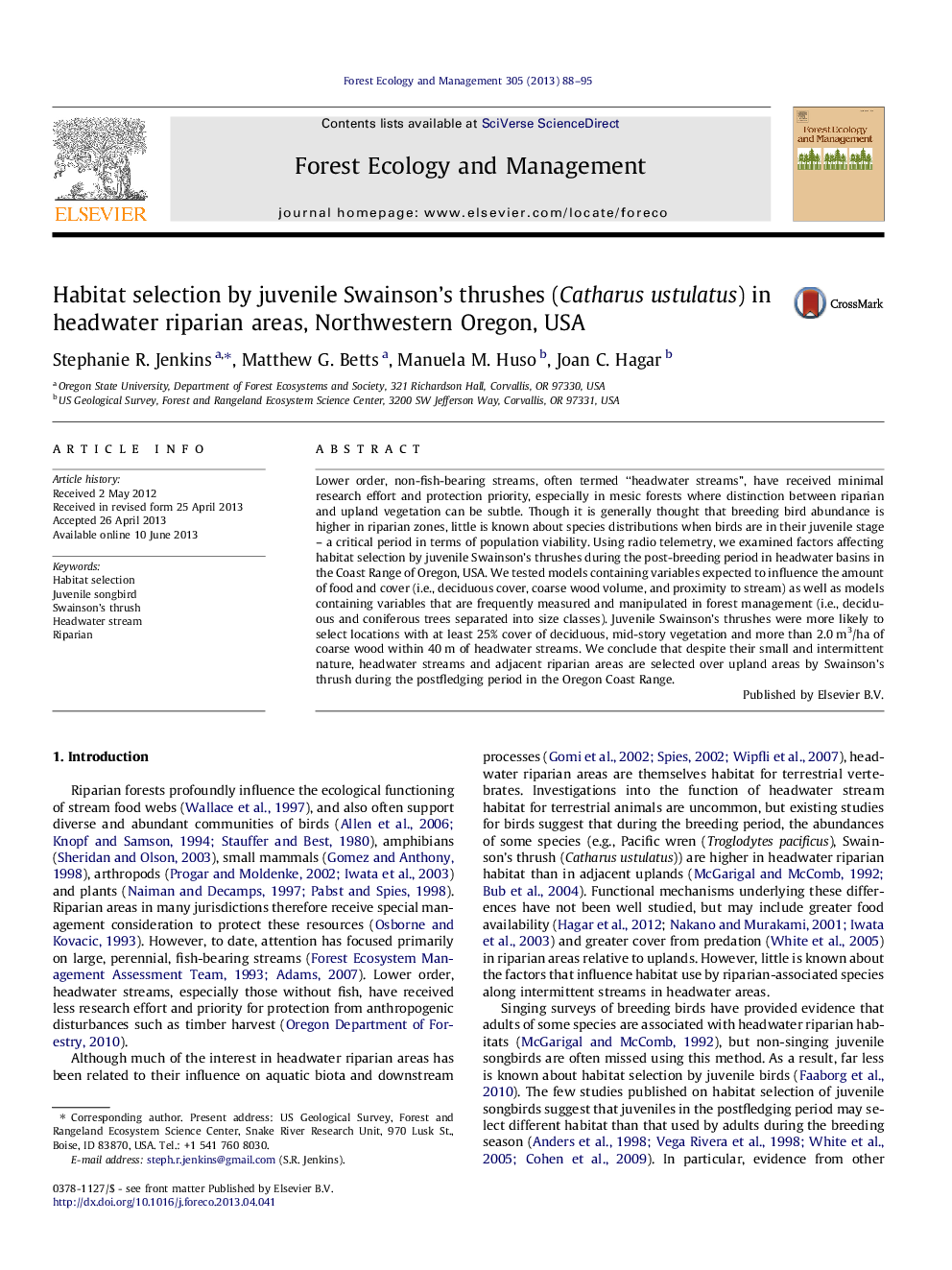| Article ID | Journal | Published Year | Pages | File Type |
|---|---|---|---|---|
| 86808 | Forest Ecology and Management | 2013 | 8 Pages |
•We examined habitat selection by juvenile Swainson’s thrushes using radio telemetry.•Headwater streams are selected by Swainson’s thrush during the postfledging period.•Juvenile birds selected >25% deciduous cover and >2.0 m3/ha of CWD near streams.
Lower order, non-fish-bearing streams, often termed “headwater streams”, have received minimal research effort and protection priority, especially in mesic forests where distinction between riparian and upland vegetation can be subtle. Though it is generally thought that breeding bird abundance is higher in riparian zones, little is known about species distributions when birds are in their juvenile stage – a critical period in terms of population viability. Using radio telemetry, we examined factors affecting habitat selection by juvenile Swainson’s thrushes during the post-breeding period in headwater basins in the Coast Range of Oregon, USA. We tested models containing variables expected to influence the amount of food and cover (i.e., deciduous cover, coarse wood volume, and proximity to stream) as well as models containing variables that are frequently measured and manipulated in forest management (i.e., deciduous and coniferous trees separated into size classes). Juvenile Swainson’s thrushes were more likely to select locations with at least 25% cover of deciduous, mid-story vegetation and more than 2.0 m3/ha of coarse wood within 40 m of headwater streams. We conclude that despite their small and intermittent nature, headwater streams and adjacent riparian areas are selected over upland areas by Swainson’s thrush during the postfledging period in the Oregon Coast Range.
